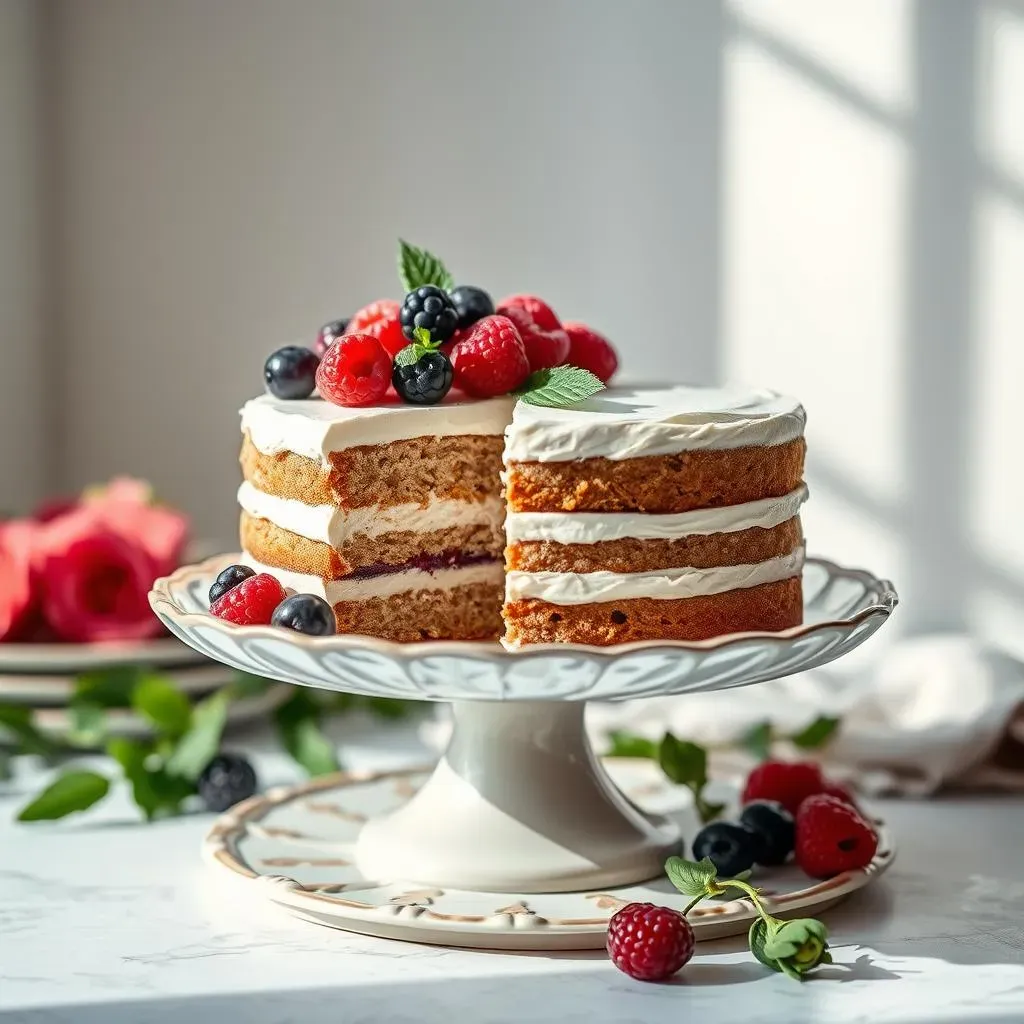Table of Contents
Let's face it: cake is delicious. But if you're watching your carb intake, the question "what cake has the least carbs?" immediately pops into your head. This isn't about deprivation; it's about smart choices. This article is your guide to navigating the world of low-carb baking, helping you understand the sneaky carbs hiding in your favorite desserts and discover surprisingly delicious alternatives. We'll explore the science behind carbohydrates in cakes, investigate which types of cake naturally boast the lowest carb counts, and equip you with practical tips and tricks to bake your own low-carb masterpieces. We'll even share some mouthwatering recipes that prove you don't have to sacrifice flavor for a healthier lifestyle. Get ready to discover the joy of guilt-free indulgence and answer the burning question: what cake has the least carbs, and how can you make it at home?
Understanding Carbohydrates in Cakes
Understanding Carbohydrates in Cakes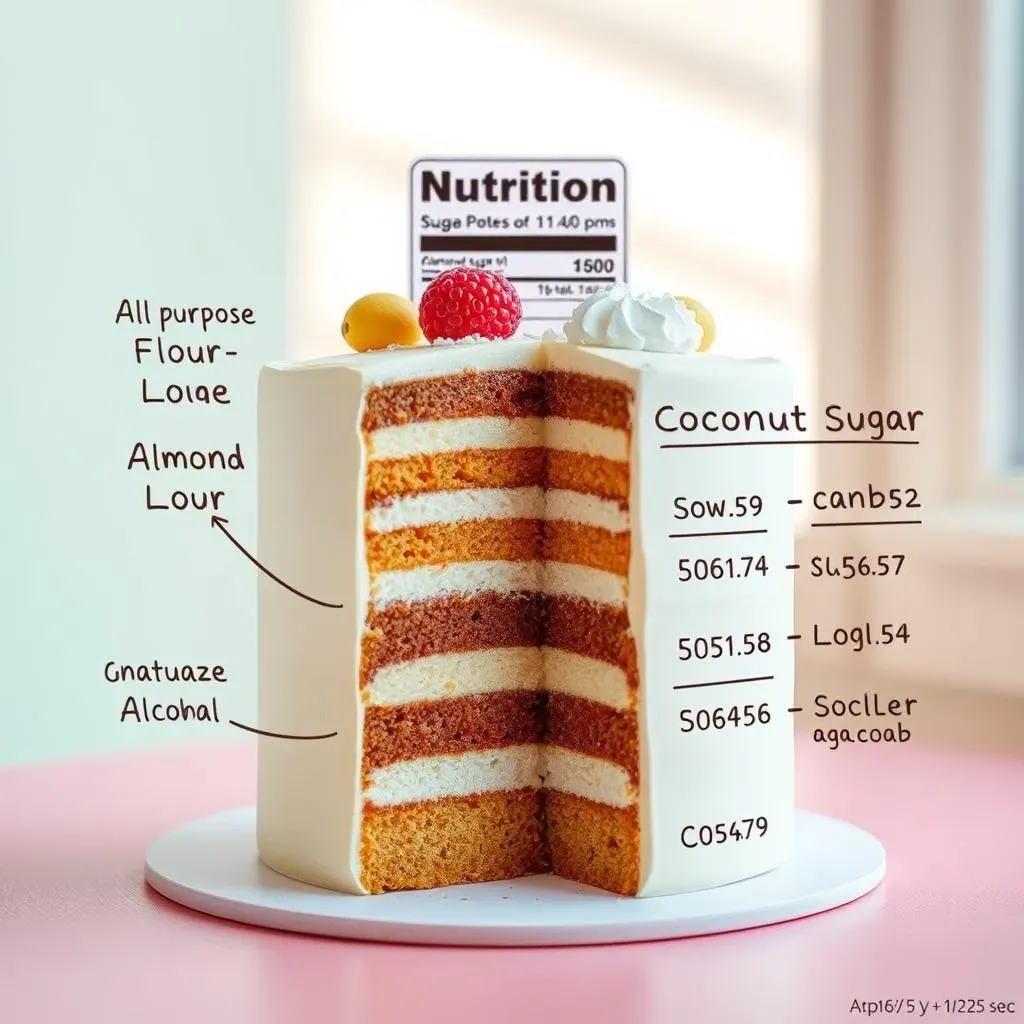
Understanding Carbohydrates in Cakes: The Sweet Truth
So, you're diving into the world of low-carb baking? Awesome! Let's get clear on what we're dealing with. Carbohydrates, in the context of cakes, are primarily sugars and starches. Sugars are the simple carbs, providing immediate energy but also contributing significantly to a cake's sweetness and, unfortunately, its carb count. Starches, on the other hand, are complex carbs found in flours like wheat, all-purpose, and even some gluten-free alternatives. These break down into sugars during digestion, impacting blood sugar levels. Understanding the different types of carbs is key to choosing low-carb cake options and baking your own. Different flours have wildly different carb contents, and even the type of sugar you use matters. Think of it like this: you're building a cake, and the flour and sugar are your primary building blocks. The more of these carb-heavy blocks you use, the higher the carb count will be.
Ingredient | Approximate Carbs per Cup (grams) |
|---|---|
All-Purpose Flour | 220-240 |
Almond Flour | 60-80 |
Coconut Flour | 100-120 |
Granulated Sugar | 190-200 |
Sugar Alcohols (e.g., Erythritol) | Varies greatly, check labels |
It's not just about the type of flour or sugar; the amount also matters immensely. A small cake will obviously have fewer carbs than a massive layer cake. This is where recipe analysis comes in handy. Always check nutrition labels and ingredient lists carefully before you bake or purchase a cake, paying close attention to serving sizes. Remember, a single serving might seem small, but the carb count can add up fast if you're not careful. This is especially important when comparing store-bought cakes to homemade versions, as the carb counts can vary dramatically. And that, my friend, is the start of understanding carbs in cake.
What Cake Has the Least Carbs? Exploring LowCarb Options
What Cake Has the Least Carbs? Exploring LowCarb Options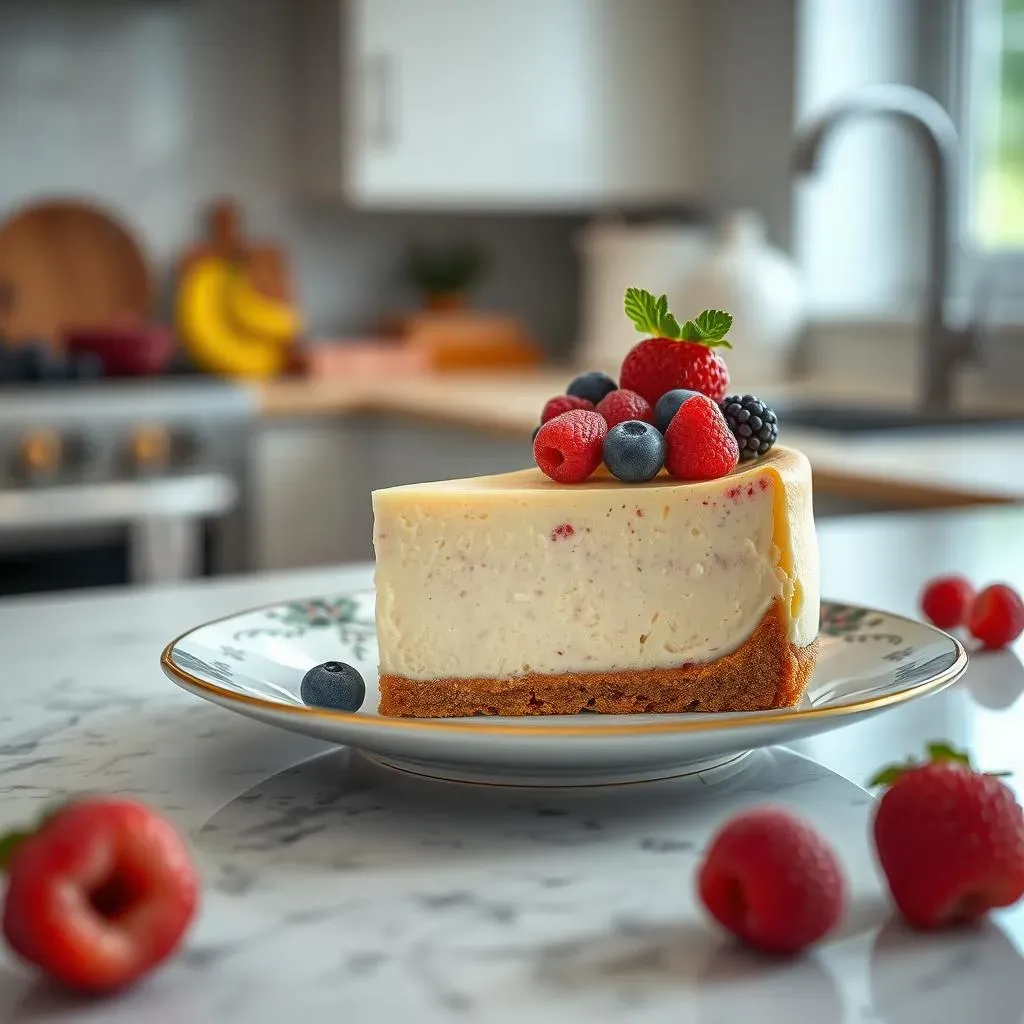
Cakes Naturally Lower in Carbs
So, you want to know what cake has the least carbs? Let's start with the naturally lower-carb contenders. Think about cakes that rely less on flour and sugar. Fruit cakes, for example, can be surprisingly low-carb depending on the recipe. The fruit itself provides sweetness and moisture, reducing the need for added sugar. However, be mindful of dried fruits; they're packed with sugar! Similarly, cheesecakes, especially those made with cream cheese and a low-carb crust (like almond flour), can be a good option. The richness of the cream cheese satisfies the craving for sweetness without relying heavily on flour. The key is finding recipes that prioritize natural sweetness and use alternative flours to minimize carbs. Don't be afraid to experiment with different fruits and spices to find your perfect low-carb cake combination. Remember, the devil is in the details, so always check the nutritional information before you indulge!
Cake Type | Carb Considerations |
|---|---|
Fruit Cake | Lower carb potential if made with fresh fruit and low-sugar recipe; dried fruit significantly increases carbs. |
Cheesecake | Relatively lower in carbs, especially with almond flour crust; watch out for added sugars in the filling. |
Sponge Cake (modified) | Can be adapted with alternative flours (e.g., almond flour, coconut flour) and sugar substitutes; pay attention to recipe ratios. |
Exploring Alternative Flours and Sweeteners
Now, let's talk about swapping ingredients to lower the carb count in your favorite cakes. One of the biggest changes you can make is switching from traditional wheat flour to alternative options. Almond flour and coconut flour are popular choices. Almond flour has a slightly nutty flavor and works well in denser cakes, while coconut flour is more absorbent and often requires more liquid. Experimentation is key here! Also consider sweeteners. Instead of granulated sugar, explore sugar alcohols (like erythritol or xylitol) or natural sweeteners (like stevia or monk fruit). These have fewer carbs than table sugar, but use them in moderation as they can have a different impact on your body than regular sugar. Be sure to read up on the specific properties of each sweetener, as they can affect the texture and taste of your cake differently. The goal is to find the best balance of flavor and low-carb content for your tastes. Low-carb baking is as much an art as a science.
Recipe Adaptations: Making Your Favorite Cakes Low-Carb
Many classic cake recipes can be adapted to fit a low-carb lifestyle. For example, a chocolate cake can be transformed by using almond flour instead of all-purpose flour and replacing sugar with a sugar alcohol or a low-carb sweetener. Similarly, vanilla cakes can be made low-carb using the same substitutions. The key is to maintain the correct ratio of wet to dry ingredients to achieve the desired texture. You might need to experiment a bit to find the perfect balance. Don't get discouraged if your first attempt isn't perfect; low-carb baking requires a little patience and practice. Online resources and low-carb cookbooks are treasure troves of helpful information and recipes. Once you get the hang of it, you'll be amazed at the delicious low-carb cakes you can create. It's all about finding creative solutions and embracing the challenge!
- Start with simple recipes.
- Gradually experiment with more complex recipes.
- Don't be afraid to adjust recipes to your taste.
- Always check nutritional information to track carbs.
Baking LowCarb Cakes: Tips and Tricks for Success
Baking LowCarb Cakes: Tips and Tricks for Success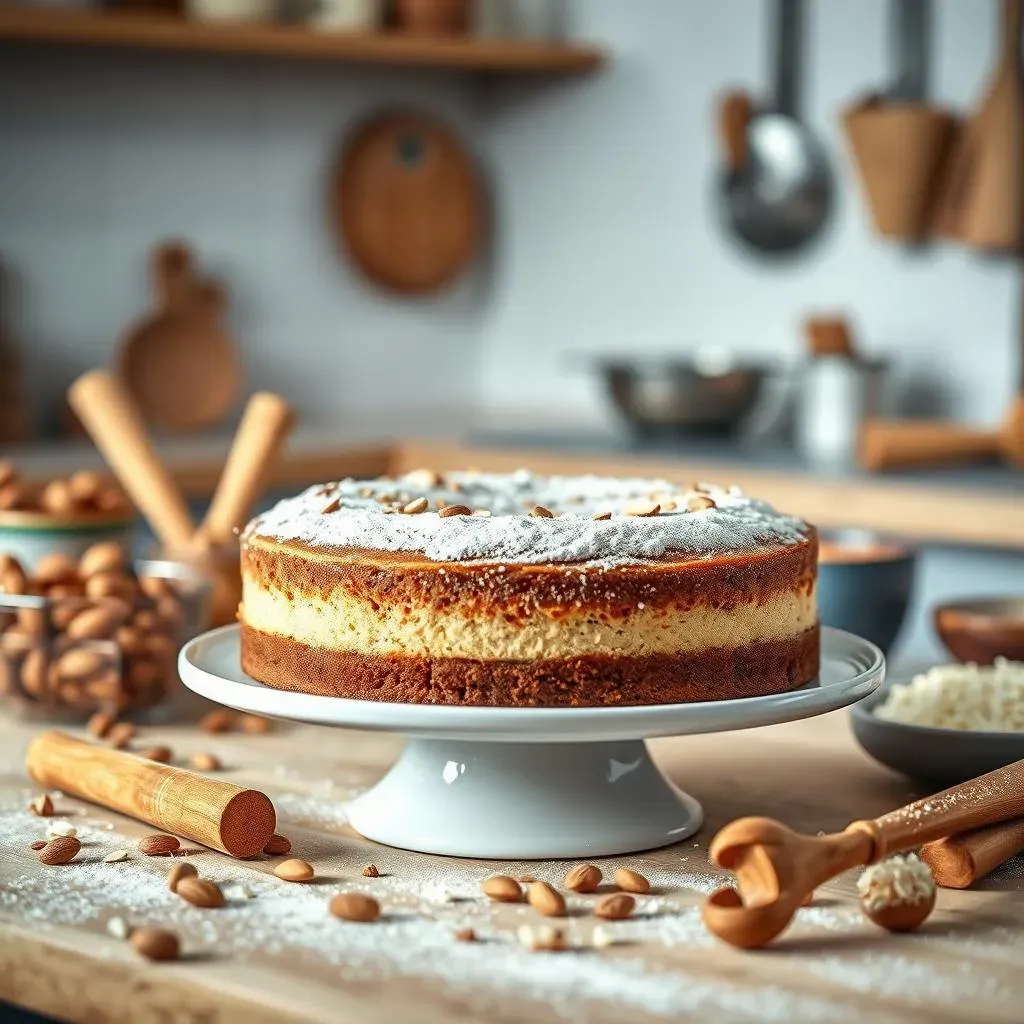
Mastering the Art of Low-Carb Flour Substitutions
Okay, so you've decided to ditch the all-purpose flour. Fantastic! But switching to almond flour or coconut flour isn't just a simple swap; it's a whole new baking adventure. These alternative flours behave differently. Almond flour is denser and can create a richer, more cake-like texture, while coconut flour is super absorbent, requiring more liquid and potentially leading to a drier cake if you're not careful. The key is understanding the ratios. Don't just replace cup for cup; recipes designed for these flours often have different proportions of wet and dry ingredients. Start with a recipe specifically designed for your chosen flour; don't try to directly convert a traditional recipe. And don't be afraid to experiment! A little trial and error will help you perfect your technique, resulting in delicious low-carb cakes.
- Almond Flour: Creates denser, richer cakes. Use recipes designed for almond flour.
- Coconut Flour: Very absorbent; requires more liquid. Recipes often differ significantly from traditional recipes.
- Other Options: Explore other low-carb flours like oat flour (check carb content!), flaxseed meal, or even a blend.
Sweetening Success: Choosing the Right Sugar Substitute
Sugar is the other big hurdle in low-carb baking. While you *could* drastically reduce the amount of sugar, it's often better to replace it entirely. There's a whole world of sugar substitutes out there, each with its own quirks. Erythritol and xylitol are popular sugar alcohols, offering sweetness with fewer carbs than sugar. However, they can have a cooling effect and may cause digestive issues for some people if consumed in large amounts. Stevia and monk fruit are natural, plant-based sweeteners, intensely sweet, so you'll need much less. The challenge lies in finding the right balance. Too little, and your cake will be bland; too much, and you might get an off-putting aftertaste. Pay close attention to the sweetness level and experiment with different combinations to find your perfect low-carb sweet spot. Remember to always check the nutritional information on your chosen sweetener.
Sweetener | Pros | Cons |
|---|---|---|
Erythritol | Sweet, fewer carbs than sugar | Cooling effect, potential digestive issues |
Xylitol | Sweet, fewer carbs than sugar | Toxic to dogs, potential digestive issues |
Stevia | Intensely sweet, all-natural | Can have a slightly bitter aftertaste |
Monk Fruit | Intensely sweet, all-natural | Can be expensive |
Delicious LowCarb Cake Recipes: What Cake Has the Least Carbs and Still Tastes Amazing?
Delicious LowCarb Cake Recipes: What Cake Has the Least Carbs and Still Tastes Amazing?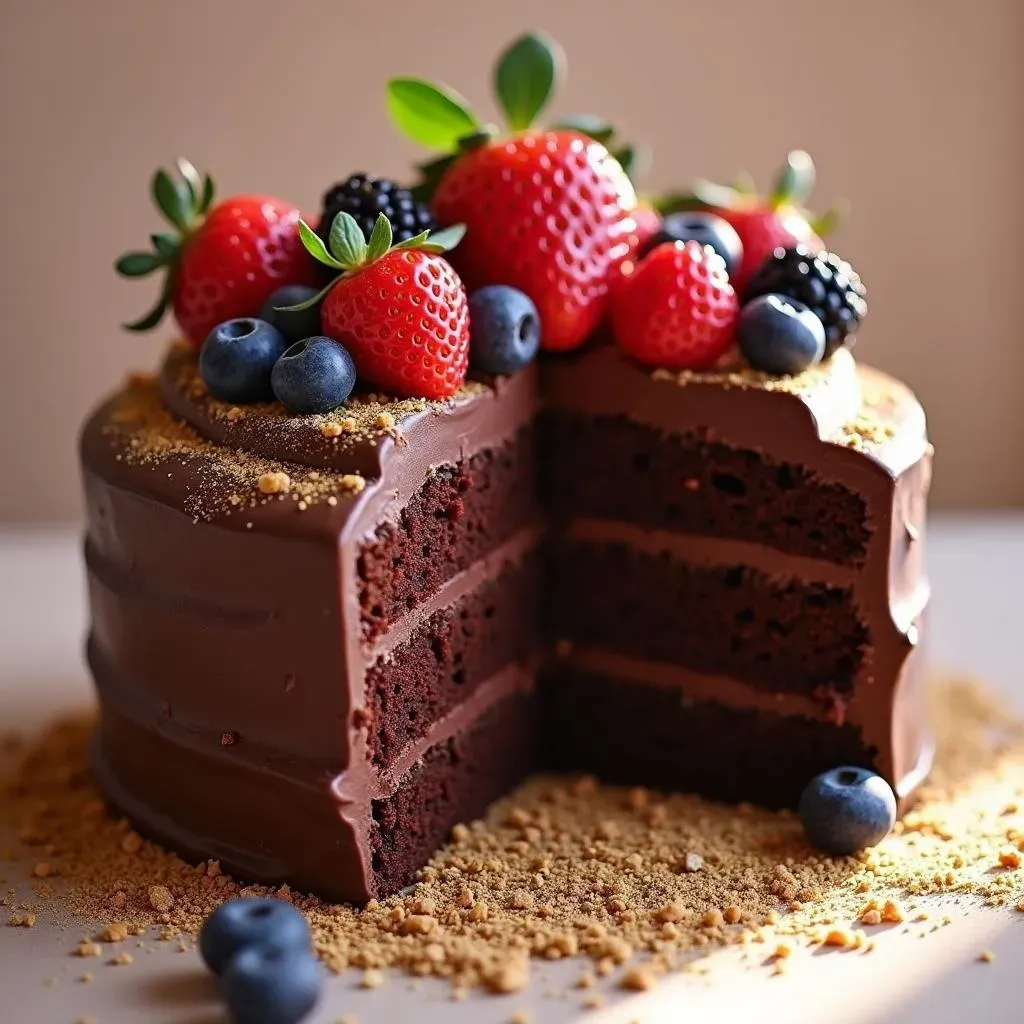
A Simple Almond Flour Chocolate Cake
Let's start with a classic: chocolate cake! This recipe uses almond flour for a rich, moist texture and a sugar substitute for sweetness. The beauty of this recipe is its simplicity. It's perfect for beginners venturing into low-carb baking. You can easily adjust the sweetness to your liking, and adding a touch of espresso powder intensifies the chocolate flavor. Remember to use a good quality unsweetened cocoa powder for the best results. Don't be afraid to experiment with different sugar substitutes to find your perfect match. This recipe is a great starting point for exploring more complex low-carb cakes.
The key is to not overbake it! Overbaking will result in a dry cake. Use a toothpick to check for doneness. If it comes out clean, your cake is ready. Let it cool completely before frosting. A simple chocolate ganache (made with heavy cream and chocolate chips) is the perfect complement to this cake. You could also get creative and add some berries or nuts for extra flavor and texture. The possibilities are endless!
Ingredient | Quantity |
|---|---|
Almond Flour | 1 ½ cups |
Unsweetened Cocoa Powder | ¾ cup |
Baking Powder | 1 tsp |
Salt | ½ tsp |
Sugar Substitute (e.g., Erythritol) | ½ cup |
Eggs | 2 large |
Unsweetened Applesauce | ½ cup |
Vanilla Extract | 1 tsp |
Milk (Almond or Coconut) | ¼ cup |
Zucchini Bread – The Sneaky Low-Carb Delight
Now, let's get a little sneaky! Zucchini bread is a fantastic low-carb option because the zucchini itself adds moisture and sweetness, reducing the need for excessive sugar or flour. This recipe uses a blend of almond flour and coconut flour for the perfect texture, and you can easily adjust the spices to your taste. Cinnamon, nutmeg, and even a hint of ginger all work beautifully. The best part? No one will guess it's low-carb!
This recipe is great for using up extra zucchini from your garden. It’s also incredibly versatile; you can add chopped nuts, raisins (use sparingly!), or chocolate chips for extra flavor and texture. Remember to grate the zucchini finely to avoid a soggy texture. This recipe is perfect for breakfast, brunch, or a healthy afternoon snack. It's a crowd-pleaser that everyone will enjoy, regardless of their dietary restrictions. And the best part is, it's incredibly moist and delicious!
- Preheat oven to 350°F (175°C).
- Grease and flour a 9x5 inch loaf pan.
- Combine dry ingredients in a large bowl.
- Combine wet ingredients in a separate bowl.
- Gently fold wet ingredients into dry ingredients.
- Add grated zucchini and mix well.
- Pour batter into prepared loaf pan.
- Bake for 50-60 minutes, or until a toothpick inserted into the center comes out clean.
- Let cool completely before slicing and serving.
Lemon Poppy Seed Cake: A Burst of Sunshine
Finally, let's brighten things up with a zesty lemon poppy seed cake. This recipe uses almond flour as a base and incorporates fresh lemon zest and juice for a vibrant, refreshing flavor. The poppy seeds add a delightful crunch, and a light glaze adds the perfect touch of sweetness without overwhelming the lemon flavor. This is a perfect spring or summer cake, ideal for a light and refreshing dessert. The bright citrus notes make it a lighter alternative to richer, heavier cakes.
The key to this recipe is using fresh lemons for the best flavor. Don't be afraid to adjust the amount of lemon zest and juice to your preference. If you want a more intense lemon flavor, add more zest and juice. You can also use a sugar substitute to control the sweetness level. This recipe is a testament to the fact that low-carb baking can be both healthy and delicious. It’s a perfect example of how to create a sophisticated dessert while staying true to your dietary goals.
